Back
Suffolk
Our Holiday in Suffolk
We had planned, many months back, to holiday with Jacob and Liam in Suffolk, the original idea being to use the caravan and awning on a quiet Certificated Location (CL) somewhere in the county. However, after much deliberation on the sleeping arrangements, with the boys, through lack of sleeping accommodation in the van, being housed in the annexe of the awning. Pam & I decided that this was not going to be such a good idea. Jacob would probably be OK as he uses the annexe all the time when he is with us. That is not the case with Liam who we found out has never caravanned before nor slept outdoors under canvas or whatever the awning material is made of. We were worried that he wouldn’t enjoy the holiday and as a result neither would Jacob.
The alternative, to rent, through Airbnb, suitable accommodation at a reasonable price in the area that we wanted to be based. After some searching and rejection, price mainly but also location, we decided on accommodation in the village of Pettistree and organised over the internet to book Monday to Saturday accommodation. The venue was ideal, being close to Woodbridge and a number of places that we wanted to visit and on screen looked excellent for layout and facilities. A little dearer than a CL but more important it would have adequate and warm sleeping accommodation for us all.
As we couldn’t arrive before early afternoon, I decided on our Sunday night accommodation at a newish Premier Inn close to the centre of Bury St Edmunds. A location, the sugar factory being the landmark, that Pam & I had passed through on numerous occasions on our way to Suffolk or the Felixstowe ferry but never visited. A mistake we would rectify that Sunday evening and the following Monday morning as we ventured into the town for food. We didn’t venture far as I had already located Wetherspoons on the map.
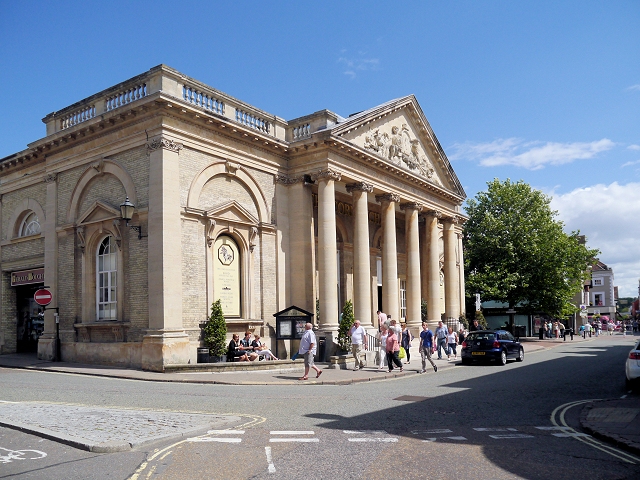
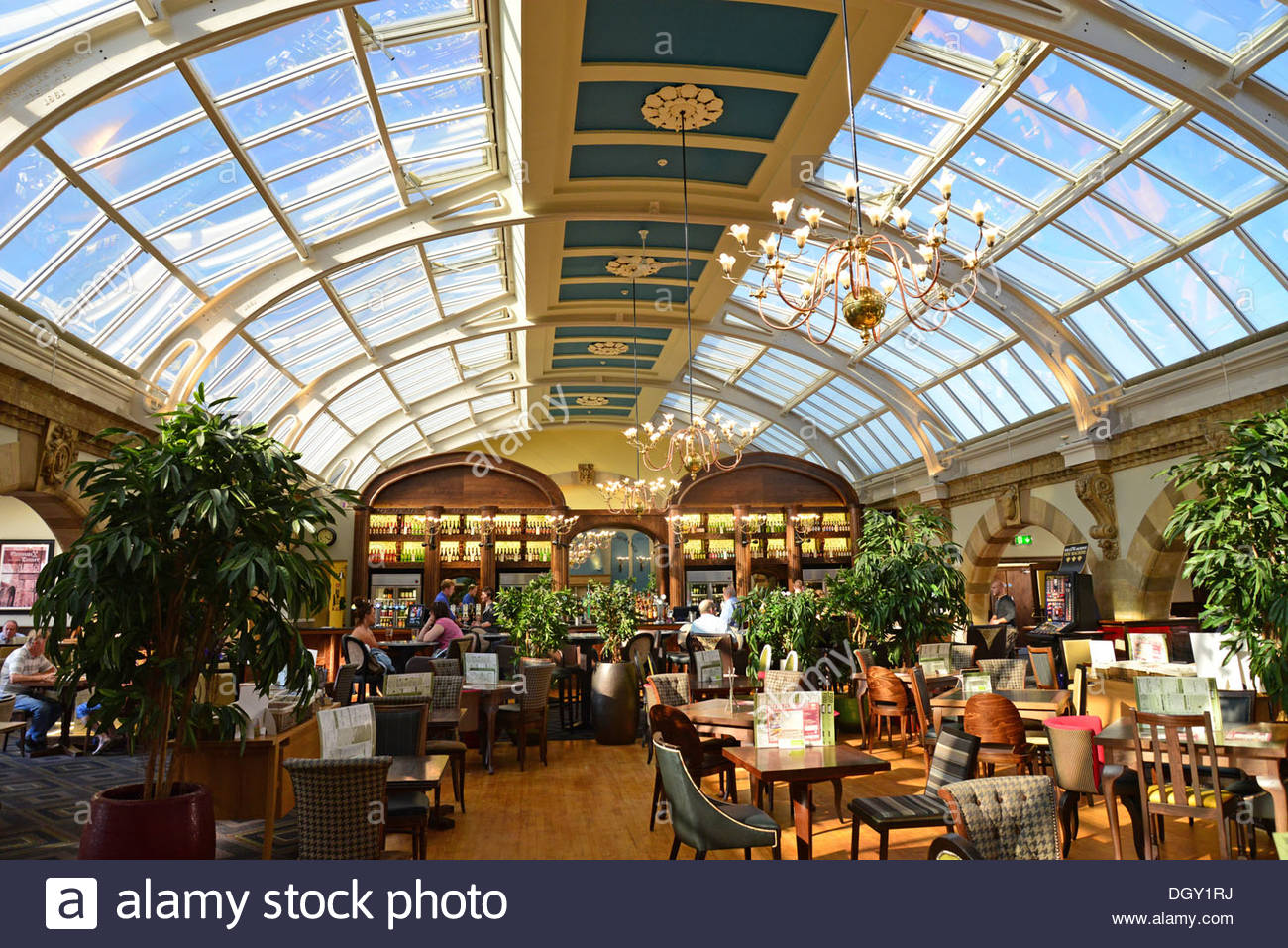
Above pictures show The Corn Exchange building now a Wetherspoons. The grand interior location of Wetherspoons within the old Corn Exchange on the first floor of the building
Yep, we ate Sunday evening dinner and Monday morning breakfast in the luxury of the “Corn Exchange” prior on the Monday morning to exploring this rather surprising market town. It’s sad the impression, I at least had formed of the town, simply driving around it at times under the shadow of the imposing British Sugar Factory. I had wrongly conjured up a small and not particularly inspiring location: how wrong could I be. The town centre boasts a number of interesting and historic buildings, a modern shopping area with a futuristic building housing Debenhams, let’s hope it survives the company’s current turmoil, and just on the outskirts of town the walled grounds of the ruined Abbey of St Edmundsbury and the current and impressive Cathedral of the same name.
The Benedictine Abbey, once, one of the largest and richest fell out of favour as did numerous others in the realm of Henry 8th and as a result was destroyed beyond all recognition. All that remains now being the foundation masonry giving some idea of the magnitude of the buildings.
I purchased a postcard which gives an artist impression of the buildings and the area that these covered, as the recreation shows, behind an equally imposing wall, picture below.
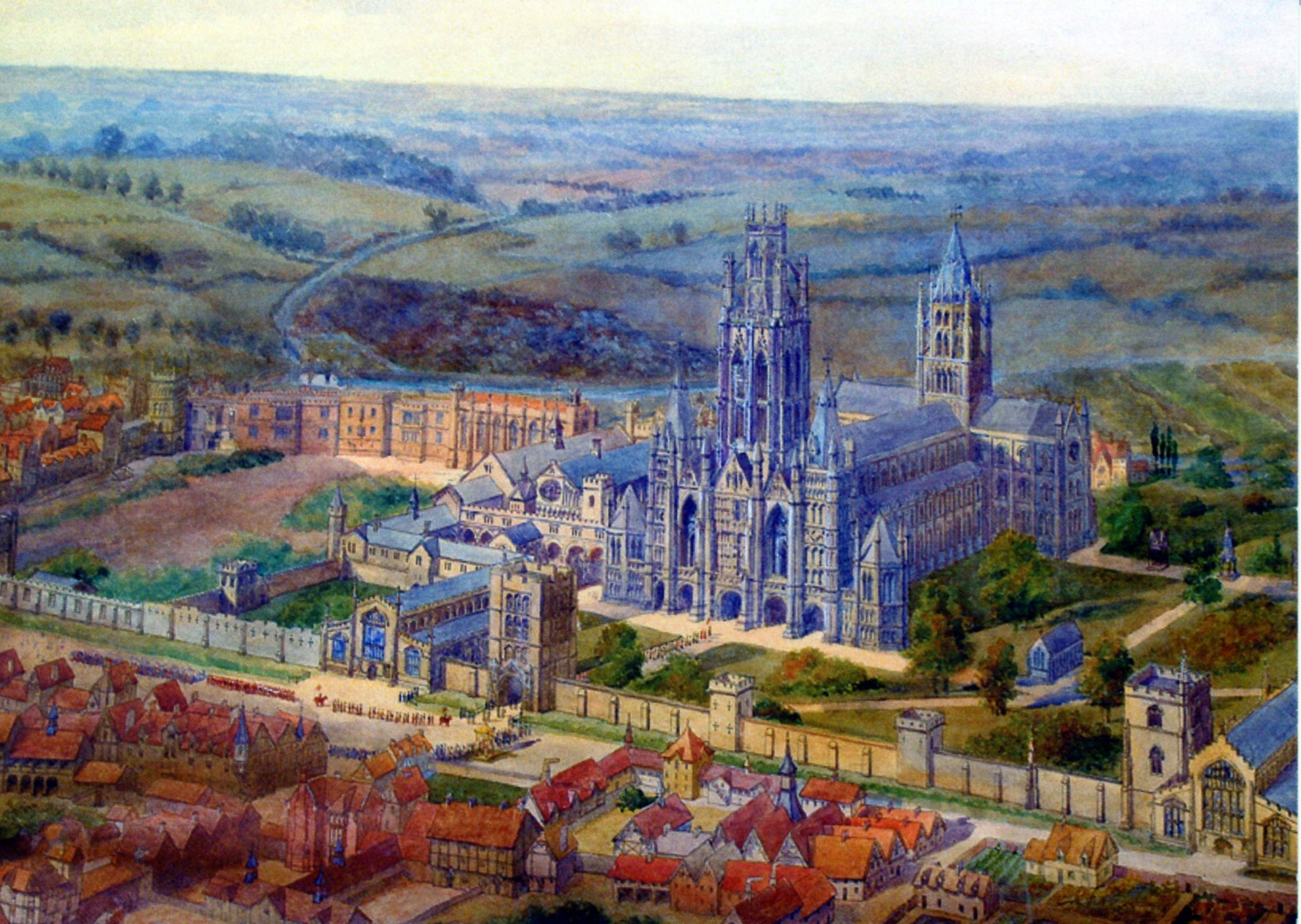
Visitors enter the gardens through the Great Gate (shown in the middle picture below) which, according to English Heritage, the current custodians, visitors have done since the 14th century. This structure is the Abbeys best surviving feature and shows the level of workmanship, that must have been maintained throughout the construction of the Abbey. Equally imposing was the cathedral itself where we spent time admiring the architecture. Originating in the 11th century, it was rebuilt in the 12th and 16th centuries as a parish church and became a cathedral in 1914; it has been considerably enlarged in recent decades.

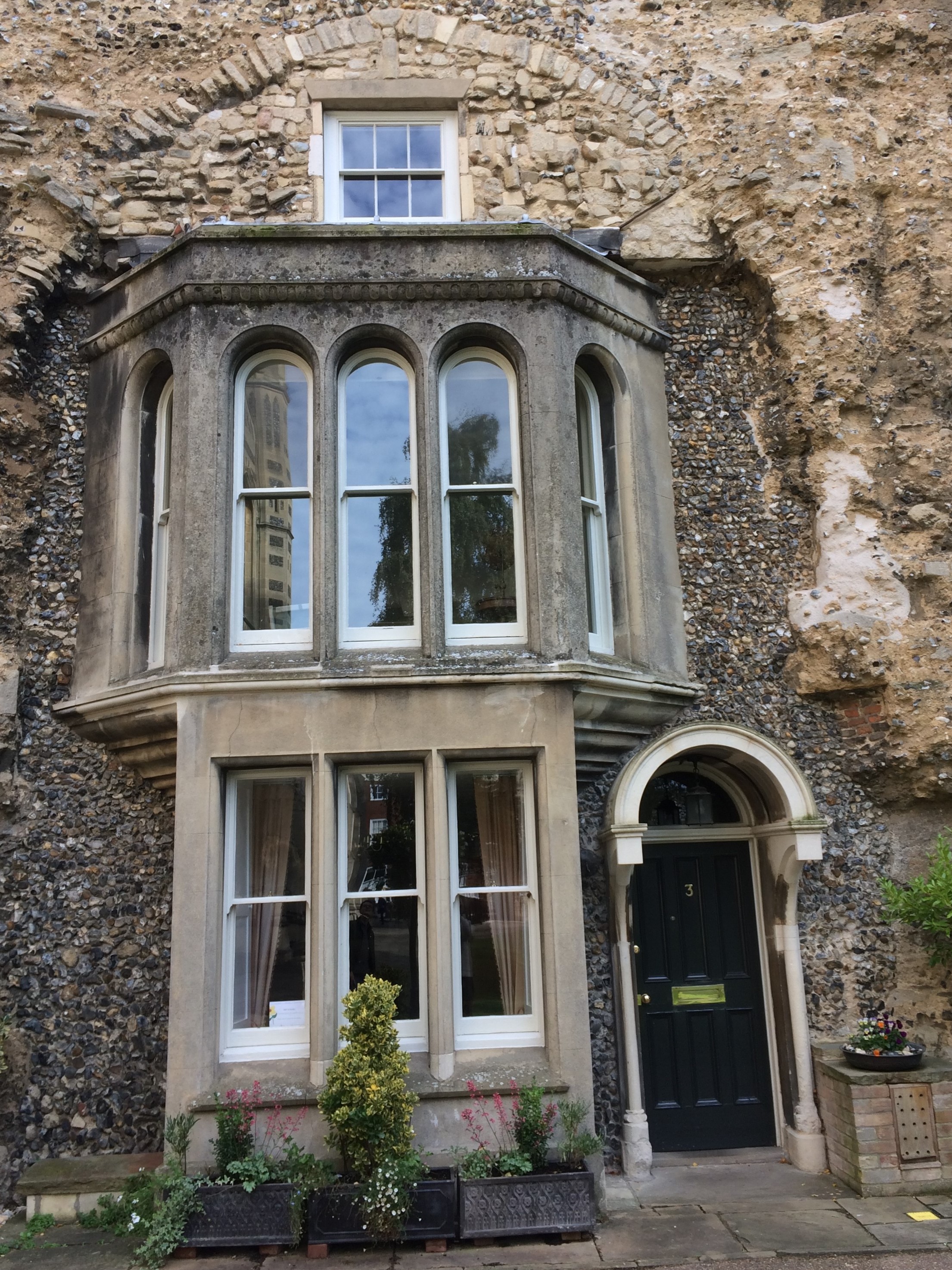
Above pictures show the modern shopping area and the fancy Debenhams building roof structure. What was Bury St Edmunds fire station now a cafe/restaurant. The Great Gate, through which you pass to gain entrance to the old Abbey gardens and the remaining ruins, now preserved by English Heritage. The next two pictures show property's built into the parts of the old Abbey buildings. Would have loved to have seen inside.
A pleasant morning wandering around this interesting town, rated one of the best to live and work, and confirms the saying: ‘Never judge a book by it’s ring road and sugar factory’.
Conscious of the time limit on the car park we made our way back to the car to continue our travels but rather than heading straight way for Pettistree we made for West Stow and the Anglo-Saxon Village. Jacob had looked this up on the internet and wanted us all to make the visit to what he led us to believe was worth the slight detour. With the absence of cars in the carpark and one solitary coach it didn’t look as though we would be troubled for space to explore, which was the case.
The visit didn’t spark that much excitement despite the historic nature of the site. Apparently, West Stow as an Anglo-Saxon residence was in existence 400 years before the Norman Conquest. Even this fact, sadly, didn’t get my interest buds flowing. After a wander around the 8 reconstructed buildings we made our way back to the reception/gift/café area where we had lunch. This was interesting as outside the window at which we sat they had erected a large bird feeding area which, throughout the time we took to eat, gave us numerous close up sightings the best being of a rather hungry Woodpecker.
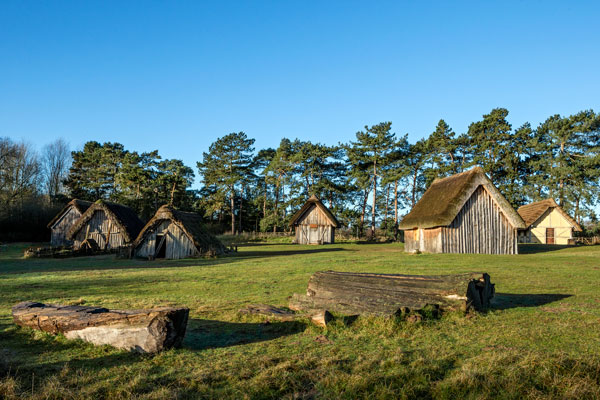
Above pictures show West Stow, the first reproduced from the internet site. Then two showing the buildings interior and exterior. Final picture Liam wearing a replica of the Sutton Hoo mask.
Spot the Goldfinch. The hungry woodpecker.
Time to make progress to our home for the next few days and to investigate the delights that it and the area has to offer.
We made good progress covering the 38 miles to our destination in just under an hour, despite much of the route being on small twisting country roads.
Having memorized and recorded in numerous places, diary and phones I used the access code on the key safe outside the door to gain entry to the property. First impressions excellent as the boys and Pam made visits to the rooms with favourable comments being forthcoming. The property consisted of two large bedrooms a bathroom with shower and a lounge/kitchen and dining area. More than adequate for our needs and made the more pleasing by the giving of a welcome pack by the owner. The pack consisted of early essentials and a couple of added goodies for us to enjoy. Not long after settling in with all our cases unpacked and contents stowed and with us relaxing with a well-earned drink, we had a visit from our host Karen. A charming and most approachable lady, Australian by birth, now married to a Suffolk man, whose parents own and run the farm on which the building, an old stables block, stands.
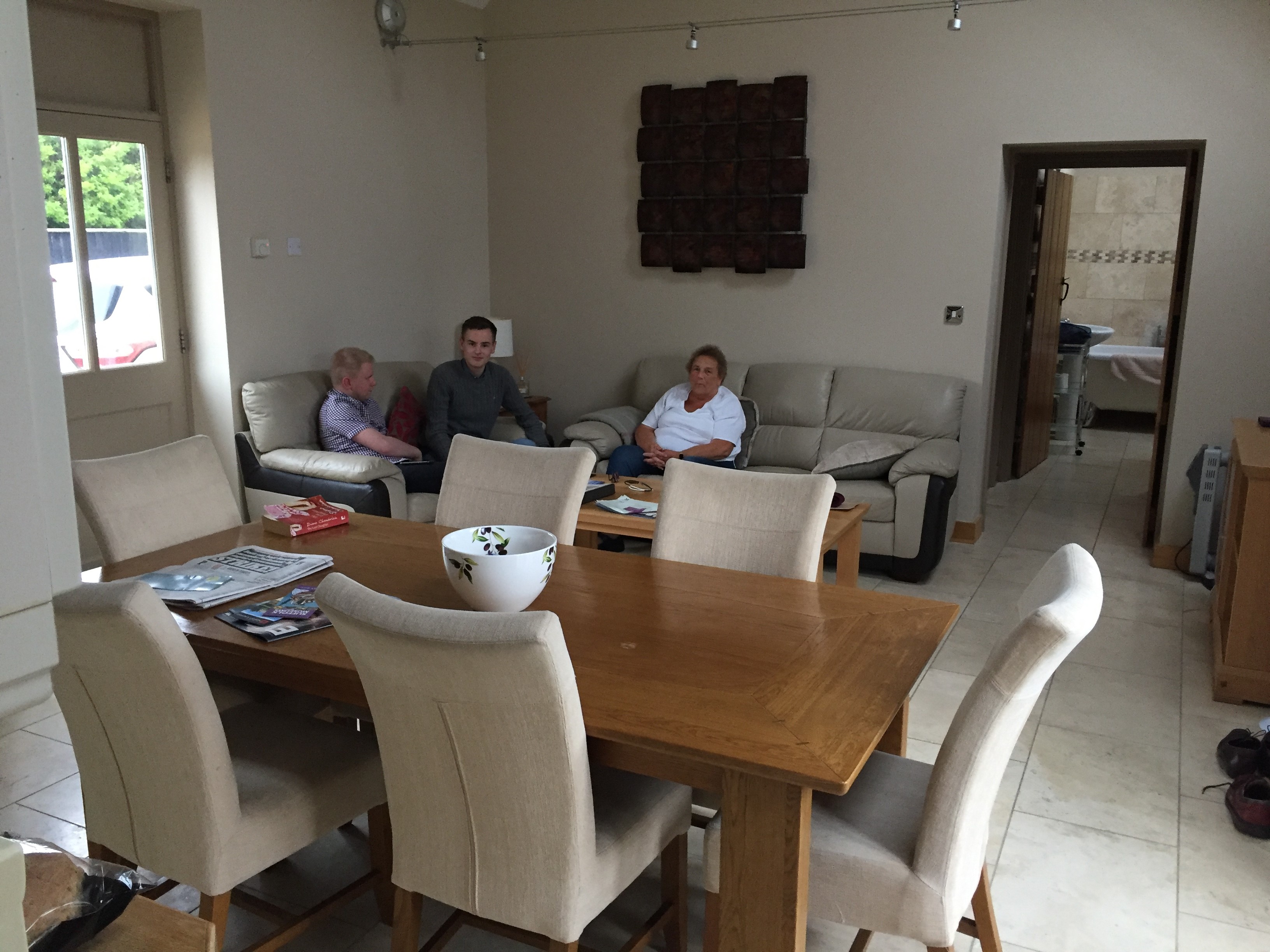
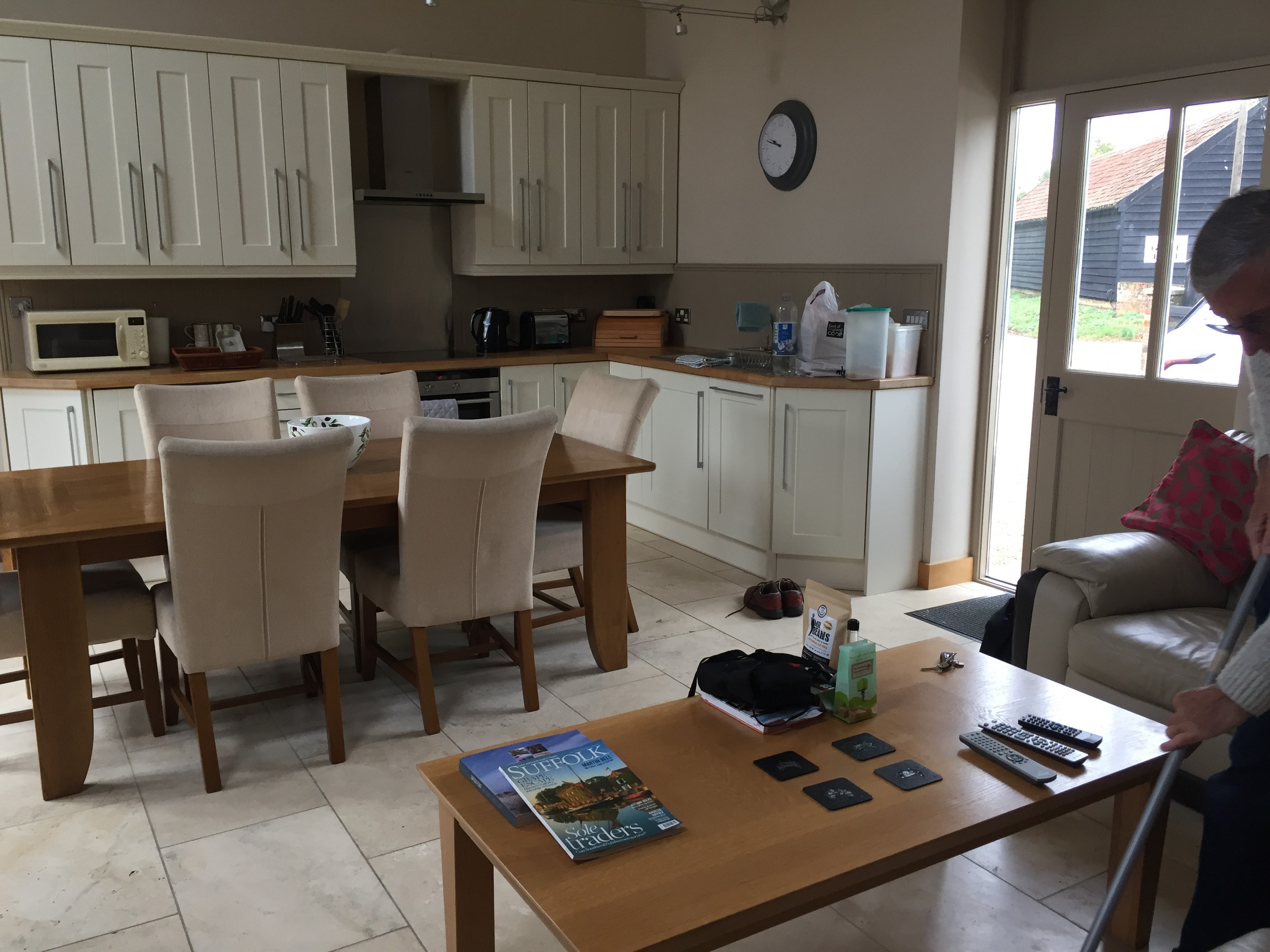
Our extremely comfortable, temporary, residence for the week. Better than any hotel anyday. Would warmly recommend as we have.
Needing to stock up on essentials for the week we made a visit in the car to the local Co-op supermarket located in the village. The village just a short drive away not only had the well-stocked Co-op but also a Chinese restaurant and take away and fish and chip shop. That’s two evening meals sorted straight away. Add to that the Inn which we passed on the way for a third and the promise of a Liam Lasagne for the fourth. Food wise we are made.
Jacob and I with the involvement of Liam, that is according to Jacob, had made several possible itineraries as to where to go and what to see. It was just a matter now of working out which on what day and could we, with careful planning, comfortably, visit two in one day. That first evening we virtually nailed the program which we stuck too, if not, strictly, on the actual days we originally said.
Our first outing of the holiday was a return for Jacob, Pam and I, but a first for Liam, in visiting the National Trust site at Sutton Hoo. This location was well worth a second visit despite the fact that Pam and I couldn’t go up to the mound installation as the temporary pathway leading up to the new installation was wet and very uneven. This didn’t worry us as we could spend more time looking around the display area, which had been change since the last visit, whilst the boys went off exploring the mounds. New to the site, well at least new since our last visit, was the reproduction metal skeleton of the ribs of the boat that was discovered, all those years back, on the site. Reading, somewhere, I can’t recall where now, since coming back from this holiday, that there is the possibility of a full-scale wooden replica being built, I assume, subject to obtaining the necessary funding. Another visit if that comes off.
Having had lunch at Sutton Hoo we set off for our next visit, again one that we have done before in the company of Jacob, to Orford for a visit to the English Heritage site of Orford Castle. No change in the castle, obviously, but there has been the introduction of modern technology in the ability to view through a handheld device, images of how the experts think the rooms would have looked. This reminded Pam and I of our visit in 2017 to Chateau Falaise where similar reproduction imagery was achieved. I would hope that this would be available throughout more properties. Our previous visit to Orford and the excellent way, even back then, that English Heritage presented the castle was what encouraged us to join.
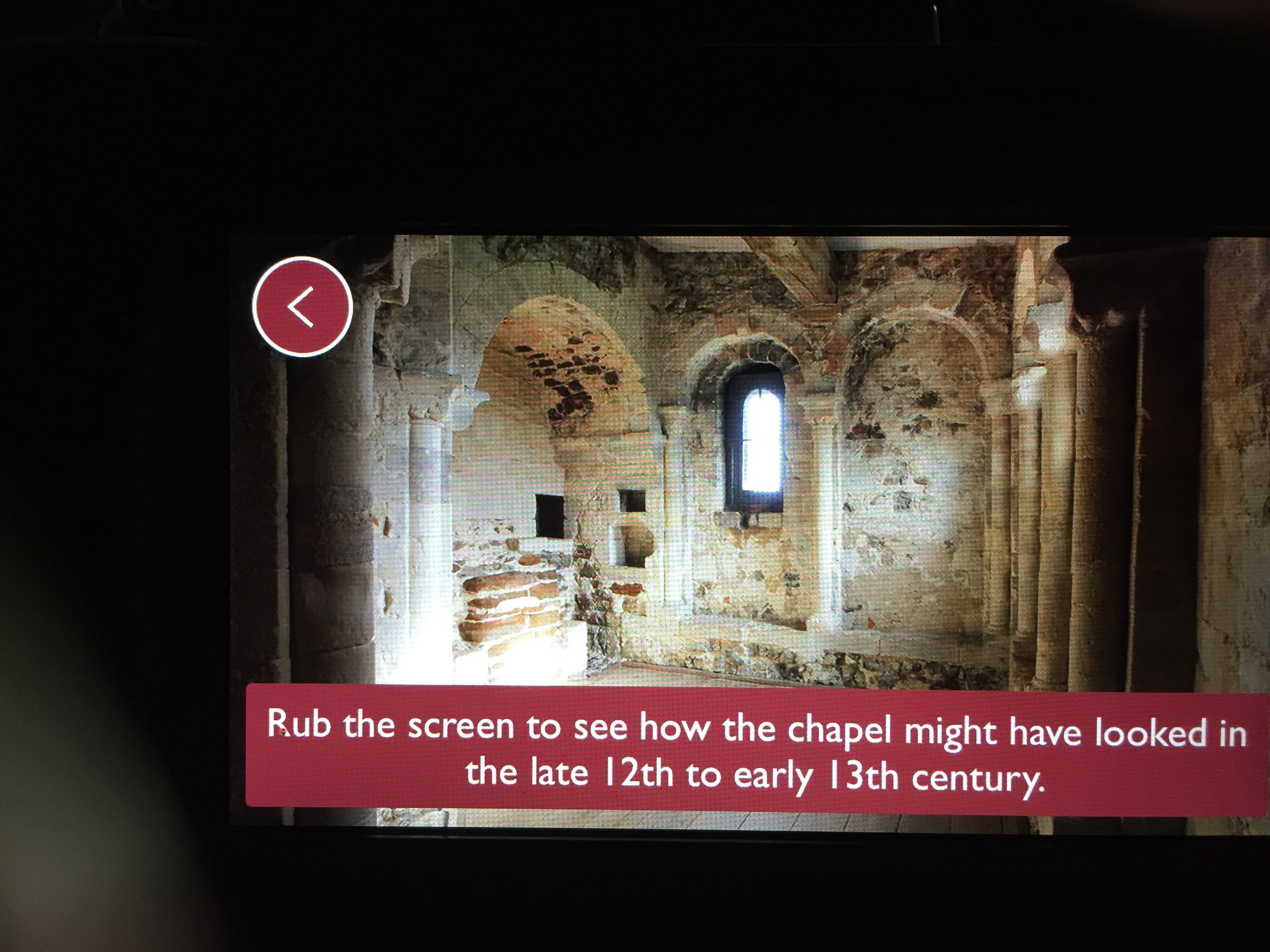

Above pictures are from the hand held unit which displayed the suggested image of each of the various rooms. The example used shows the present and what is visualised.
From Orford we made our way back to Pettistree with a detour to wander around the galleries, craft and antique stores at Snape. As is the case most times you visit Snape you can rarely find a parking space close to the shops. Today was no exception and it was raining. We actually made a purchase on this visit and from the antiques centre purchasing a set of solid silver teaspoons – big deal some might say.
The next day, thankfully in better weather we set off to visit Thorpeness and as the weather held, we left Pam in the café as the boys and I set off to locate the house in the clouds. An accomplishment, prior to today, I have never achieved, either through the lack of time or the sheer inability to locate the right road.
Success, despite the three of us ensuring we located the road that leads to the house and the windmill; we actually ended up on the outskirts of the village, before we realised, we were going in the completely wrong direction. Fortunately, we stopped, took stock of our location to the house that we could clearly see in the distance, worked out our co-ordinates and made our way back into the village before finding the road we had walked past earlier and dismissed as being wrong. So, it wasn’t just me who can’t navigate!
Close up and personal, at last, with the House in the Clouds and the windmill at Thorpeness.
Pleased at last to have got up close to both windmill and the house and able to take a number of pictures as reminders. A visit to Thorpeness wouldn’t be complete without first, a visit to the 'Emporium' (A much used Celebrity and Antiques Road Trip location) and second, the lakeside café for lunch. Suitably replenished, excellent quality food, as always, we set off to visit Aldeburgh further down the coast road.
Aldeburgh an interesting and once important fishing and ship building location now attracts visitors for its Suffolk charm, the birthplace of the renowned composer Benjamin Britten. It was at nearby Snape, which we visited yesterday, that in 1948 Britten set up the Aldeburgh Festival. The festival takes place at Snape Maltings a former site for the malting of barley for the brewing of beer. Concerts are performed in what was the largest of the malthouses.
Our third day touring Suffolk saw us heading for Felixstowe not to visit the town but for a visit to the English Heritage site of Landguard Fort.
Landguard Fort defends the approach to Harwich Harbour, a safe haven for shipping. It was the site of the last opposed seaborne invasion of England, by the Dutch in 1667, who were repulsed by the Royal Marines in their first land battle. The current fort was built in the 18th century, and modified in the 19th century, with substantial additional 19th and 20th-century outside batteries. It was manned through both World Wars and played an important anti-aircraft role during the Second World War. In 1951 two of the old gun casemates were converted into a 'Cold War' control room. The fort was disarmed and closed in 1956. (data courtesy of English Heritage).
An interesting structure with, as the above notation shows, a varied history much of which is on display in one form another throughout this vast structure. As well as the fort itself its position, strategically, offers great views over the estuary, both towards Harwich and of the colossus of the adjacent Felixstowe container port. After a lengthy tour, thankfully some of it spent seated watching on video, footage of a re-enactment of the Dutch invasion, we travelled the short distance in the car to the disembarkation point for foot and bicycle ferry terminal and café. At the café, fortunately by one of the large windows, we sat having lunch, taking the opportunity to watch the loading and unloading activity on the vast container ships and the boat traffic entering and leaving the harbour.

A group photo courtesy of the English Heritage member of staff. She was just arriving to open up and offered to take the photo. The next two are part of the Dutch invasion exhibition and video presentation.
From Felixstowe we travelled the short distance to visit Bawdsey Radar station which, on September 24th, 1937, became the first fully operational radar station in the world.
Remarkably, this was only a short eighteen months after the first experiment, conducted by Robert Watson Watt and Arnold Wilkins, which established that by using transmitted radio waves it was possible to detect an approaching aircraft. The remains of the base, open as a small exhibition area, was manned by keen and extremely knowledgeable staff eager to impart that knowledge at every opportunity. You only had to stop to look at a notice or an article and they would be there, beside you, providing you with mind boggling, totally incomprehensible data. Despite having paid a lot to enter we still didn’t stay long. Sad, as for anyone interested in this amazing field of technology this would be the place to visit, if they haven’t already.
Our final day for touring as we have to make tracks for home the next day is to visit the English Heritage site at Framlingham. No longer famous for its castle but for one of its inhabitants (at this point I was lost for the name and had to look it up on the Internet – oh to be old and out of touch) a certain Mr Ed Sheeran. Despite his nearby presence we came for the castle. A return journey for three of us but a first for Liam. Despite being here last year I still find the castle sufficiently interesting. It as a fascinating history dating back to the 12th century. Impressive in that the castles towering curtain wall still stands and in most places are fully accessible. It was behind these walls that Mary Tudor was proclaimed Queen of England. Walk the ramparts of the castle enables you to take in the breath-taking views. The food on offer however didn’t appeal as much as the castle so we all set off into Framlingham to find suitable options which thankfully we did. Only to be reminded of the real local attraction – see photographs.
Jacob & Liam and Pam & I in a local eaterie, run very effectively by a group of young ladies, serving very yummy food. They may have a possible interest in the local celeb. Note the safety precautions in the emergency case behind Liam.
A fabulous break, a return to many favourite haunts and all in the company of Pam, Jacob and for the first and hopefully not the last time Liam. Thanks most definitely to Karen and the property at Pettistree.